One boiler is not enough! Selecting liquid for heating a private house
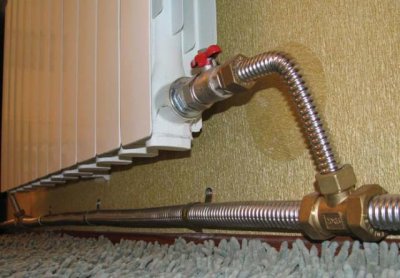
Among the methods of heating private housing, the most common is use of liquid heating systems.
Liquids are used as a heat carrier, the most common of which are: water and various antifreezes, containing special additives.
The effectiveness and safety of using a particular liquid, first of all, depend on the type of heating system, as well as her technical and operational characteristics.
There is also a feedback loop – the operation of the equipment and the overall efficiency of heating largely depend on the quality and chemical and physical properties of the coolant used.
Heat carrier for heating a private house
Coolant - substance circulating in the heating circuitThe main task is to transfer thermal energy from the heat generator that produces it to the heating radiators installed in the premises.
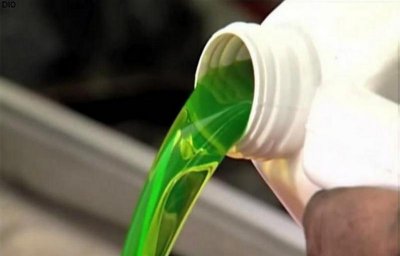
Work efficiency depends on the following properties and characteristics of the coolant:
- Heat transfer index determines the volume of thermal energy transferred from the heat generator to the radiators over a fixed period of time.
- Viscosity indexThe speed of its circulation in the heating circuit depends on the viscosity of the coolant.
- Coefficient of thermal expansionThe required volume of the expansion tank depends on this indicator.
- Chemical activity indicators affect the risk of corrosion (or other undesirable chemical processes), which to a large extent affects the service life of various elements of the system.
- Safety indicatorsAmong these indicators, the most important are the ignition temperature and toxicity - both of the liquid itself and its vapors.
Requirements for properties, depend on the type and special design of the heating system. If the coolant does not meet the required parameters, it can have negative consequences for both the building’s heating system and the liquid used.
Reference. In standard heating systems, the operating temperature of the coolant fluctuates from 70 °C to 85 °C, although rare increases are possible up to 120 °C.
Coolant fluids
Water and antifreeze — the main types of liquid heat carriers used in domestic conditions. The choice of one or another liquid depends primarily on the characteristic features of the heating system, as well as the existing operating conditions.
Water
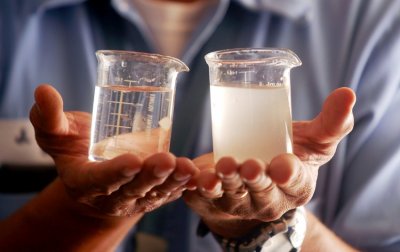
Water - the most common coolant. This fact is due to its high heat capacity and fluidity, as well as relative chemical passivity.
At the same time, water absolutely safe for humans - non-flammable and non-toxic, the consequences of possible leaks are easily eliminated and do not cause significant damage.
When using water, the required frequency of top-ups is reduced, and if there is a shortage of liquid in the circuit, its volume can easily be increased to the required value. Water — the cheapest of all existing heat carriers, used in domestic conditions.
Important! It is not recommended to use water, not pre-treated, due to the high concentration of various chemical elements in it, which contribute to the formation of scale and the onset of corrosion processes.
Preparation of water before feeding the circuit is carried out in one of the two following ways:
- Heat treatment. The required volume of liquid is boiled in a metal container of the appropriate size. When boiling, carbon dioxide is removed from the water, and other impurities precipitate. The main disadvantage of this method is its relatively low efficiency - some impurities still remain in the water.
- Chemical treatment. Special reagents are added to the water. In this case, impurities of insoluble compounds precipitate, after which the water is filtered to remove the remains of substances dissolved in it.
In addition to self-prepared water, water is also often used as a heat carrier. distillateThis option is optimal in terms of liquid purity, but preparing the required volume of distilled water at home is a complex and labor-intensive process, and purchasing it is relatively expensive.
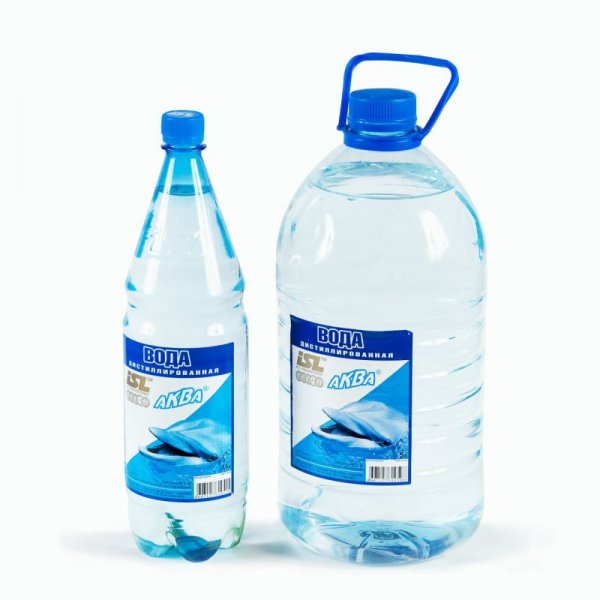
Photo 1. Two bottles of distilled water (1.5 l and 5 l). The substance is used as a heat carrier for heating.
In addition to the need for preliminary preparation, Among the main disadvantages of water are:
- Physical properties. Water freezes at a temperature below 0 °C, which is fraught with serious damage to the heating.
- Corrosion and scale formation. Even the use of treated water increases the risk of corrosion on unprotected metal surfaces. When scale forms, the overall efficiency of the existing heating system is significantly reduced.
Reference. The above-described disadvantage is eliminated by using special additives, protecting the heating system.
Antifreeze
Antifreezes - class of antifreeze liquids, based on water-glycol solutions in combination with various additives. The main advantage of non-freezing liquid is its heat resistance.
When the temperature drops below 0 °C, the substance does not freeze, but goes into a gel-like state. When returning to its original state, the original properties of the antifreeze do not change. The coolant is optimal for use in buildings that are not regularly used.
Important! In addition to ready-made antifreezes, various concentrates are also available for sale. In this case, it is allowed to use for diluting the concentrate exclusively distilled water.
Among the unconditional advantages of antifreezes are:
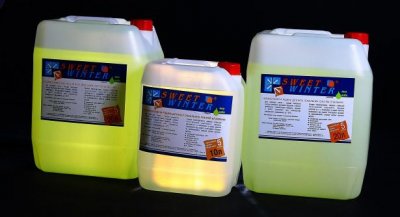
- VersatilityThe average operating temperature is 75 °C, which allows them to be used with most modern boiler models.
- Low freezing point. Household antifreezes operate in a temperature range from -30 °C to -65 °C.
- Thermal stabilityAntifreezes do not freeze - there is no need to drain the liquid when stopping the heating system at the end of the season or during conservation.
Reference. Antifreezes containing special additives, do not have a destructive effect on most materials, used in the production of various elements of domestic heating systems. However, such compositions are distinguished by their high price.
The service life of the antifreeze (depending on the modification) is from 5 to 10 years, however, heating equipment manufacturers recommend changing the antifreeze completely once every 3-4 yearsWhen changing, a complete flush of the heating system is required: both pipes and radiators, as well as the boiler.
The main disadvantages include:
- High viscosity indexThis property requires the use of a high-power circulation pump, as well as a larger (compared to water) pipe diameter and radiator volume.
- Heat capacity index compared to water 15% down. However, this feature is typical only for cheap compositions.
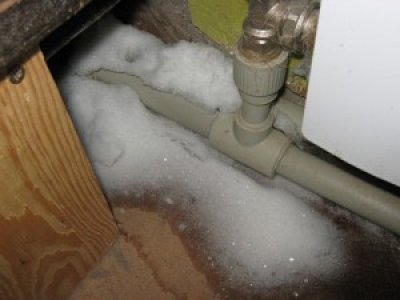
- Thermal expansion Antifreeze when heated requires a sealed and capacious expansion tank.
- Toxicity. Antifreeze leakage may cause harm to human health. It is prohibited to use in dual-circuit systems due to the possibility of its leakage and entry into the hot water supply circuit.
- Chemical activity. It is not recommended to use antifreeze in systems with galvanized pipes. In addition, cheap compounds have a destructive effect on polymers and rubber used in the production of various components of heating systems.
Attention! In the market of consumables for heating systems, a considerable percentage of the products sold are counterfeit liquids. External signs of low-quality antifreeze are non-standard canister sizes and poor quality label printing.
Useful video
Watch the video to learn how to choose the right heating material.
Optimal choice
Each type of coolant has its own individual advantages and disadvantages, which are manifested to a greater or lesser extent depending on depending on the existing operating conditions and characteristics of a specific heating system: equipment capacity, operating temperature range and materials used to produce individual elements of the system.
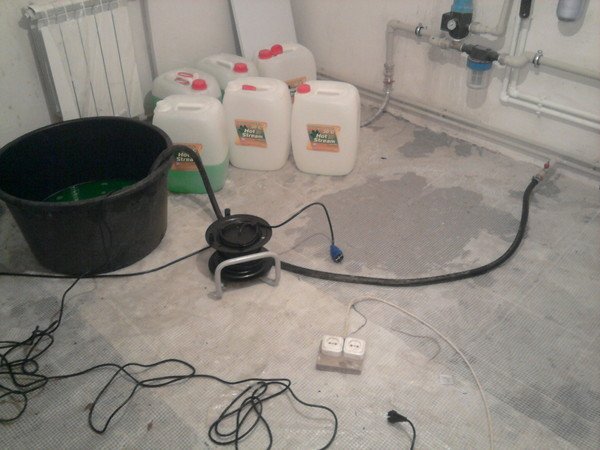
Photo 2. The process of filling the heating system with antifreeze. The liquid has a greenish color and is diluted with water.
The frequency of operation of heated premises is of great importance - in most cases, water is optimal for use in permanent residences, antifreeze - for use in summer cottages.
Selection of coolant is determined by the type of heating system: just as for devices designed for water, the use of antifreeze is unacceptable, and for systems designed for antifreeze, the use of water is unacceptable. However, regardless of the type of heating, the main rule when using any liquid is compliance with equipment manufacturers' recommendations.









Comments